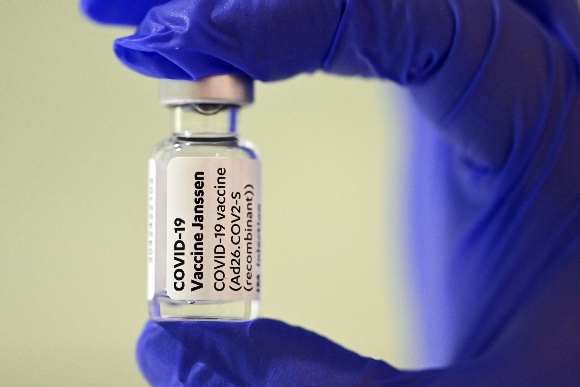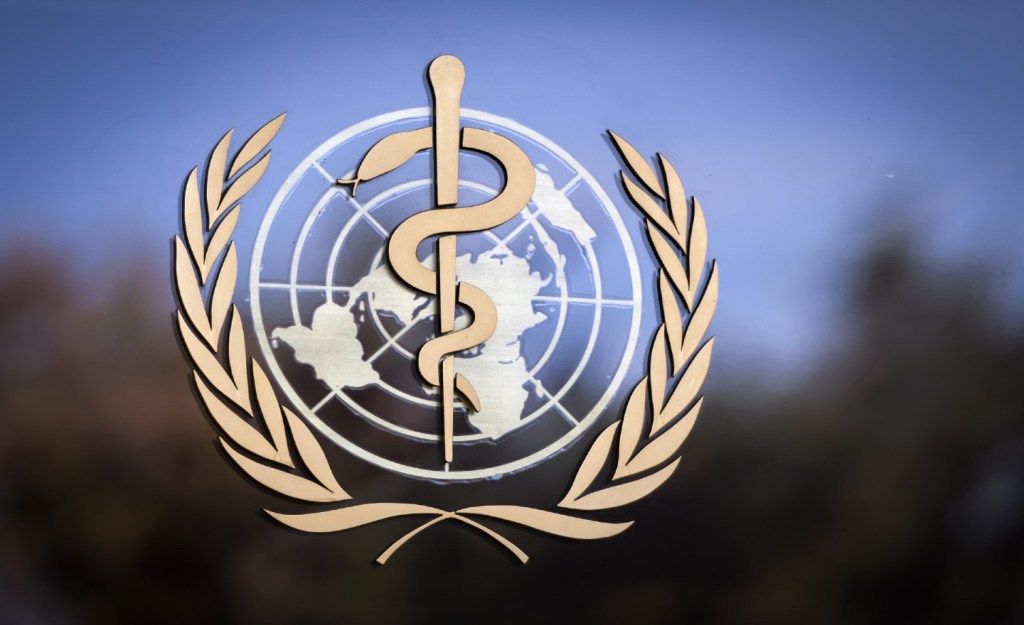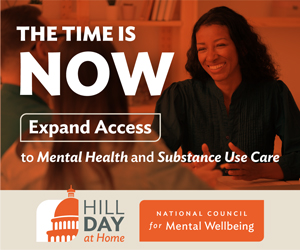Overnight Health Care — Presented by The National Council for Mental Wellbeing — NIH study finds mix-and-match boosters effective
Welcome to Wednesday’s Overnight Health Care, where we’re following the latest moves on policy and news affecting your health. Subscribe here: digital-stage.thehill.com/newsletter-signup.
“Star Trek” actor William Shatner, who played Captain James T. Kirk, became the oldest person to travel to space on Wednesday aboard Blue Origin’s New Shepard rocket for a roughly 10 minute trip.
New data shows people who received the single-dose Johnson & Johnson vaccine will likely benefit from a booster dose — it just may not be the same vaccine.
For The Hill, we’re Peter Sullivan (psullivan@digital-stage.thehill.com), Nathaniel Weixel (nweixel@digital-stage.thehill.com) and Justine Coleman (jcoleman@digital-stage.thehill.com). Write to us with tips and feedback, and follow us on Twitter: @PeterSullivan4, @NateWeixel and @JustineColeman8.
Let’s get started.
Study finds ‘mixing and matching’ boosters safe, but Moderna, Pfizer are best

Receiving a booster dose of a different vaccine than what was initially administered is safe and effective, though people who received Johnson & Johnson’s vaccine may get more benefit from a booster of an mRNA vaccine such as Pfizer’s or Moderna’s, according to data released Wednesday.
A highly anticipated preprint study on “mixing and matching” vaccines from the National Institutes of Health found that boosting with any of the three vaccines currently licensed or authorized for emergency use in the U.S. will generate an immune response.
However, people who received a booster dose of either the Moderna or Pfizer vaccines had a higher increase in their antibody responses more often than those who received an extra dose of J&J, according to the study, which has not yet been peer reviewed.
The results: People who received an mRNA-based booster vaccination had a four-fold increase in their neutralization response more frequently than those who were boosted with J&J’s adenovirus vaccine.
A booster dose of Moderna’s vaccine provided the highest boost of neutralizing antibodies in people who received any of the other vaccines as the primary dose. Those who received a prime dose of Moderna’s vaccine and the same booster had the highest levels of immune response. But the increase in immune response of a Moderna booster compared to a Pfizer booster was likely not significant enough to make a noticeable difference.
What’s next: The data from the study will be presented to an outside advisory panel of the Food and Drug Administration later this week as part of a series of meetings to consider requests from both Moderna and J&J to authorize booster doses of their vaccines.
A MESSAGE FROM THE NATIONAL COUNCIL FOR MENTAL WELLBEING
This is our chance to expand access to care. Join us on October 19 for Hill Day at Home – the largest mental health and substance use advocacy event of the year. Learn more.
FDA REPORT SUGGESTS J&J COVID BOOSTER BENEFICIAL DESPITE LIMITED DATA
But don’t dismiss the benefits of a booster dose of Johnson & Johnson’s vaccine. Despite the comparatively lower levels of antibodies, it may build up over a greater time period.
And overall, a second dose of Johnson & Johnson’s coronavirus vaccine is likely beneficial to recipients, the Food and Drug Administration (FDA) said Wednesday, though the data is extremely limited.
In a briefing document released ahead of an advisory panel meeting later this week, the FDA said it relied heavily on studies conducted by Johnson & Johnson and could not independently confirm many of the findings because data from the trials were not submitted in time.
While the vaccine provides protection against severe disease for at least six months, the company said a decrease in protection over time against cases that include moderate COVID-19 was observed globally, which could be driven by waning protection or reduced efficacy against emergent SARS CoV-2 variants.
Johnson & Johnson said a booster is recommended “at 6 months or later, based on the strength of the immune responses” for people ages 18 and older. But it also suggested a booster may be administered as early as two months after the initial dose; the advisory panel will discuss that evidence during the meeting.
Significance: Taken together with the NIH study, the data could finally provide a path forward for the 15 million recipients of Johnson & Johnson’s vaccine. But it leaves the FDA panel to grapple with a similar question they faced when the J&J vaccine was first authorized: what is the role of a booster to a vaccine that’s less effective than others that are widely available?
WHO announces new team to study coronavirus origins

The World Health Organization (WHO) on Wednesday announced a new team to study the origins of the novel coronavirus.
Approximately 700 people applied for a spot on the team, with specialists in multiple fields included in the new group to satisfy those who believe the virus came from a lab in China.
The team will advise the WHO on investigations into future diseases as well as study the beginnings of the coronavirus.
“The emergence of new viruses with the potential to spark epidemics and pandemics is a fact of nature, and while SARS-CoV-2 is the latest such virus, it will not be the last,” WHO Director-General Tedros Adhanom Ghebreyesus said.
Avoid politicization: The team is looking to be a more permanent body so it can avoid politicization in future pandemics, WHO’s COVID-19 technical lead told The New York Times.
“We want to take this back to the science, take this back to our mandate as an organization to bring together the world’s best minds to outline what needs to be done,” Maria Van Kerkhove, the WHO’s COVID-19 technical lead told the newspaper
China and the World Health Organization released a scrutinized report earlier this year concluding the virus most likely came from wildlife instead of a laboratory.
An investigation by the U.S. intelligence community also said there was inconclusive evidence to determine if the virus came from wildlife or a laboratory in Wuhan, China.
White House tells states to prepare plans to vaccinate kids in coming weeks

The White House coronavirus task force on Tuesday urged state leaders to be ready to begin rolling out COVID-19 vaccination efforts for kids as early as the start of next month.
Administration officials told governors on a regularly scheduled call that school-aged kids could be eligible for the shots by early November and encouraged states to have plans in place to get them vaccinated, a source on the call confirmed.
ABC News first reported that pandemic response coordinator Jeff Zients told governors the White House has enough supply to inoculate roughly 28 million kids between the ages of 5 and 11.
White House press secretary Jen Psaki said Wednesday the administration is preparing messaging and outreach strategies to meet parents where they are and address any concerns or questions about getting their children vaccinated once the shot is approved.
“Parents are going to want to go and ask their doctor questions, ask their pediatrician questions, better understand the safety, the efficacy of the vaccine,” Psaki said at a press briefing. “What we will be doing is of course … empowering local medical experts, pediatricians, doctors who can speak to this, who can answer questions as they have them. We’ll be encouraging people to speak to their doctors.”
What’s next: Pfizer last week said it had submitted an application to the Food and Drug Administration (FDA) for emergency use authorization of its COVID-19 vaccine in children ages 5 to 11. An FDA advisory committee is meeting to discuss the application on Oct. 26.
A MESSAGE FROM THE NATIONAL COUNCIL FOR MENTAL WELLBEING
This is our chance to expand access to care. Join us on October 19 for Hill Day at Home – the largest mental health and substance use advocacy event of the year. Learn more.
DEM LAWMAKER CRITICIZES MEDICARE DENTAL ‘HALF MEASURE’

Democratic Rep. Jared Golden (Maine) is criticizing the provision in House Democrats’ current social spending package to add dental benefits to Medicare as a “potentially harmful half-measure.”
Golden writes that he believes adding dental benefits to Medicare could be “meaningful and effective” for seniors, but he wants the policy to be done right. He criticizes the current bill for not beginning dental benefits until 2028, and the government would not pick up 50 percent of seniors costs until 2032.
“I am concerned that such a long delay in roll out of this coverage is a deliberate effort to shift costs outside the ten year score of this legislation, thereby masking its true cost,” he wrote in a letter to House Ways and Means Committee Chairman Richard Neal (D-Mass.) and Energy and Commerce Committee Chairman Frank Pallone (D-N.J.).
Golden says if the provision cannot be fully paid for and implemented quickly, it should be “set aside.”
The concerns from Golden, a lawmaker from a competitive district, illustrate the balancing act on health provisions, as leaders look to also fund priorities like enhanced Affordable Care Act subsidies and expanded Medicaid, which are all competing for scarce dollars.
Golden wrote last week that the package overall “needs more work” to get his support.
DOCTORS GROUPS CALL FOR GREATER ROLE IN VACCINE ROLLOUT
An array of doctor groups is writing to the White House calling for a greater role for doctors offices in distributing the COVID-19 vaccine.
“We, the undersigned organizations representing physicians nationwide, urge you to make it simpler for office-based physicians, including primary care physicians and pediatricians, to access COVID-19 vaccines,” write the groups, including the American Academy of Family Physicians, American Academy of Pediatrics and American College of Physicians.
They note that primary care doctors and pediatricians are “trusted messengers,” but that office-based doctors “have continuously been left out of the vaccine rollout.”
The letter comes as new steps are coming in the vaccine rollout, including booster shots and possible vaccinations for children under 12.
WHAT WE’RE READING
- FDA grapples with timing of booster for J&J COVID-19 vaccine (The Associated Press)
- CDC predicts continued declines in Covid-19 hospitalizations and deaths over next 4 weeks (CNN)
- Is a ‘twindemic’ of flu and COVID-19 about to hit the U.S.? (National Geographic)
STATE BY STATE
- Minnesota hospitals are nearing capacity as a virus surge batters the state. (The New York Times)
- Pennsylvania lawmakers are locked in a partisan battle over the release of disease data shielded by 1955 law (The Morning Call)
- Utah’s COVID-19 hospitalizations as high as during pandemic’s peak — and cases may be on the way up (Deseret News)
OP-EDS IN THE HILL
That’s it for today, thanks for reading. Check out The Hill’s healthcare page for the latest news and coverage. See you Thursday.
Copyright 2023 Nexstar Media Inc. All rights reserved. This material may not be published, broadcast, rewritten, or redistributed. Regular the hill posts









